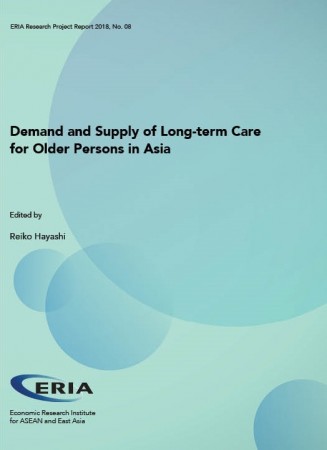LEAD RESEARCHER
Reiko Hayashi, National Institute of Population and Social Security Research (IPSS), Japan
COLLABORATING RESEARCHERS
Toru Suzuki, IPSS, Japan
Katsuhisa Kojma, IPSS, Japan
Yoshimi Chitose, IPSS, Japan
Masataka Nakagawa, IPSS, Japan
Keita Suga, IPSS, Japan
Osuke Komazawa, ERIA, Indonesia
Khaing Khaing Soe, Department of Population, Ministry of Immigration and Population, Myanmar
Nyi Nyi U, Department of Population, Ministry of Immigration and Population, Myanmar
Lolito R.Tacardon, Commission on Population, Philippines
Halimah Awang, Social Security Research Centre (SSRC), University of Malaya, Malaysia
Do Hoon Kim, National Health Insurance Service, Republic of Korea
Zhenzhen Zheng, Institute of Population and Labor Economics, Chinese Academy of Social Sciences, Beijing, China
Ting Feng, Institute of Population and Labor Economics, Chinese Academy of Social Sciences, Beijing, China
Luong Quang Dang, General Office for Population, Ministry of Health, Viet Nam
As the world’s population continues to age, so too is ageing proceeding in Asia. The number of older persons 65 years and over in Asia will nearly triple from 335 million in 2015 to 937 million in 2050. How to promote healthy and active ageing is a critical policy priority, but inevitably the burden of long-term care for the elderly will increase. The need is urgent, as the speed of ageing in many Asian countries in the coming decades will progress much faster than in countries in Europe and Northern America or even in Japan. The need to promote economic development at the same time the population ages poses challenges to certain countries as they do not have sufficient fiscal strength to support social security costs such as pension or health insurance systems. Changes in family values, as well as the high level of internal and international migration, is resulting in aged parents being left behind and alone. This makes family care more difficult and increases the demand for the social care offered by communities and governments.
Given this context, this research project focused on the present status and future trends of demand and supply of long-term care for older persons in Asia, notably in East and South-Eastern Asia. The demand was measured by the number of older persons who need care and also by the living arrangements of older persons—particularly those living alone. The supply was measured in terms of the human resources available to provide long-term care and also the long-term care facilities. Along with national level measurements and international comparisons, this research addressed the importance of subnational differences. This is important as the size of the countries included in the study varies greatly. Comparing China, with its 1.4 billion people, with Japan (128 million) or Thailand (69 million) might lead to incorrect conclusions. Observing the subnational level data is also important due to internal migration, where some rural areas experience severe depopulation of the youth and thus exhibit a proportion of older persons that is much higher than the national average.
The results of this study will provide evidence for policymakers in charge of planning and executing long-term care systems for older persons in Asia, both within each economy and internationally.


